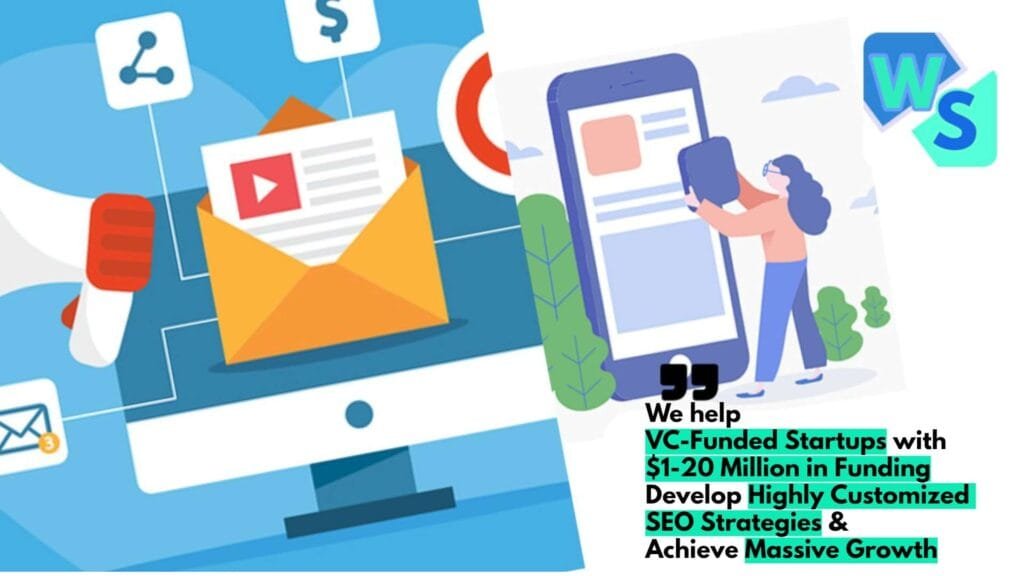Understanding Finance Content Marketing
To excel in finance content marketing, I need to understand its importance and the benefits it can bring to my business. This section will provide insights into why content marketing is crucial and how it can empower my financial enterprise.
Importance of Content Marketing
Content marketing has emerged as a necessary strategy for businesses aiming to engage, inform, and convert their target audience (OptinMonster). In the finance industry, effective content marketing plays a pivotal role in establishing authority, building trust, and educating potential clients about complex financial products.
- Lead Generation: Content marketing generates over three times more leads than outbound marketing and costs 62% less on average (HubSpot).
- Customer Engagement: Engaging content can attract and retain a target audience, increasing the chances of conversion.
- Brand Authority: High-quality content helps establish a business as an authority in the finance sector, fostering trust and credibility.
Benefits of Content Marketing in Finance
Implementing a robust content marketing strategy in the finance industry can yield numerous benefits that directly impact business growth and customer relationships.
Cost-Effective Lead Generation:
Content marketing offers a cost-effective way to generate and nurture leads. It can prove particularly advantageous for startups and smaller firms with limited marketing budgets, especially considering the resource constraints faced by fintech firms post-2021 (Mint Copywriting Studios).
Marketing Method Average Cost Leads Generated Content Marketing Low High Outbound Marketing High Moderate Increased Conversion Rates:
By providing valuable content, finance businesses can guide potential clients through the sales funnel. By addressing pain points and offering solutions, content can convert leads into customers more effectively.
Funnel Stage Primary Metrics Top-of-Funnel Traffic, Engagement Bottom-of-Funnel Conversions, Sales Enhanced SEO and Online Presence:
Creating optimized content can improve search engine rankings, leading to increased organic traffic. This helps finance firms reach a broader audience and gain visibility in a highly competitive market.
Building Customer Loyalty:
Regularly publishing informative and relevant content helps build a strong connection with the audience, fostering loyalty and increasing lifetime customer value.
Educating and Empowering Clients:
Financial literacy is essential for informed decision-making. Through educational content, I can help clients understand complex financial concepts and products, empowering them to make better choices and trust my services (NinjaPromo).
In essence, embracing content marketing within finance leads to tangible benefits for both businesses and their clients. Leveraging diverse aspects such as financial services marketing, digital finance marketing, and finance influencer marketing can propel your business towards sustained growth.
For more detailed insights into developing killer strategies, see my guide on financial marketing tools and finance lead generation.
Strategies for Effective Content Marketing
Effective content marketing in the finance sector involves various strategies to ensure that your efforts build brand awareness, generate leads, and drive customer action. Below, I will outline these key strategies.
Building Brand Awareness
Brand awareness is crucial for any financial business. Creating content that resonates with your audience helps in establishing trust and credibility. Here’s how:
- Consistent Blogging: Publishing high-quality blog posts about financial topics not only shares knowledge but also boosts your visibility in search engines. For instance, writing on finance marketing trends can position your business as a thought leader.
- Social Media Presence: Utilization of platforms like LinkedIn, Twitter, and Facebook to share content and interact with your audience.
- Influencer Marketing: Collaborating with finance influencers (finance influencer marketing) to expand your reach and credibility.
Generating Leads
Content marketing generates over three times more leads than outbound marketing and costs 62% less on average (HubSpot). Lead generation tactics include:
- E-books and Whitepapers: Offering valuable downloadable content in exchange for contact information.
- Webinars and Online Workshops: Hosting events that provide real-time value to participants and gather leads.
- Customer Testimonials and Case Studies: Showcasing successful client stories to build social proof.
| Lead Generation Method | Cost to Implement | Estimated Leads Generated per Month |
|---|---|---|
| Blogging | Low | High |
| E-books/Whitepapers | Medium | Medium |
| Webinars/Workshops | Medium | High |
| Customer Testimonials/Case Studies | Low | Medium |
Driving Customer Action
To convert leads into customers, it’s important to create a seamless path towards actionable steps. This includes:
- Clear Call-to-Actions (CTAs): Encouraging readers to take the next step, whether it’s downloading a report or scheduling a consultation.
- Personalized Content: Using buyer personas created from demographic data collection and customer feedback analysis to craft content that speaks directly to different segments of your audience.
- Retargeting Campaigns: Implementing retargeting strategies that follow potential customers with relevant content until they complete the desired action.
| Action-Driving Method | Implementation Time | Conversion Rate |
|---|---|---|
| Clear CTAs | Immediate | High |
| Personalized Content | Continuous | High |
| Retargeting Campaigns | Continuous | Medium |
Focusing on these strategies can lead to an effective finance content marketing plan that not only builds your brand but also generates leads and drives meaningful customer actions. For detailed strategies, you can explore our guide on finance marketing strategies and insights on digital finance marketing.
Key Performance Indicators (KPIs)
Establishing and monitoring key performance indicators (KPIs) is vital for evaluating the success of finance content marketing strategies. KPIs make goals specific and measurable, enabling more precise adjustments and optimizations. Below, I will discuss three essential KPIs: revenue metrics, sales metrics, and traffic metrics.
Revenue Metrics
Revenue metrics provide insight into how well content marketing efforts are translating into financial results. This involves tracking the amount of revenue generated directly or indirectly from content marketing initiatives.
Common Revenue Metrics:
- Total Revenue: Overall income generated from content marketing.
- Revenue Per Lead: Revenue attributed to each customer acquired through content.
- Return on Investment (ROI): For every dollar invested in content marketing, what is the return in revenue? An ROI ratio of 5:1 is seen as profitable and satisfactory (Business.com).
| Metric | Definition | Ideal Range |
|---|---|---|
| Total Revenue | Overall income from content marketing | Increasing trend |
| Revenue Per Lead | Income from each acquired lead | > $92 |
| ROI | Return for every dollar invested | 5:1 or better |
Sales Metrics
Sales metrics focus on how effectively content converts leads into paying customers. This is particularly crucial given that, on average, for every $92 spent on acquiring a lead, only $1 is allocated to converting them (O8).
Key Sales Metrics:
- Conversion Rate: The percentage of leads turned into customers through content-driven campaigns.
- Customer Acquisition Cost (CAC): Total cost involved in acquiring a new customer via content marketing.
- Sales Cycle Length: The time it takes for a lead acquired through content to become a paying customer.
| Metric | Definition | Ideal Range |
|---|---|---|
| Conversion Rate | Percentage of leads converting to customers | Increasing trend |
| CAC | Cost to acquire a new customer | < $1 in conversion cost for every $92 in acquisition spend |
| Sales Cycle Length | Time to convert a lead to a customer | Shorter cycles preferred |
Traffic Metrics
Traffic metrics gauge the number of visitors and the quality of their engagement with the content. They provide indicative measures of the reach and interest generated by the content marketing efforts.
Important Traffic Metrics:
- Website Traffic: Total number of visitors to content-related web pages.
- Engagement Rate: The level of interaction (likes, shares, comments) content receives.
- SEO Metrics: Search rankings, organic traffic, and keyword performance.
| Metric | Definition | Ideal Range |
|---|---|---|
| Website Traffic | Number of web page visitors | Increasing trend |
| Engagement Rate | Level of audience interaction | High engagement |
| SEO Metrics | Performance in search visibility | Higher rankings, increased organic traffic |
For more insights into traffic metrics and how these impact your finance content marketing, explore our articles on financial marketing tools and digital finance marketing.
Tracking these KPIs effectively will help in optimizing content strategies, ensuring that the efforts align with the overarching goal of boosting the financial business. Consider employing a blend of these performance metrics to gain a comprehensive understanding of your content marketing success.
Knowing Your Target Audience
Understanding your target audience is a cornerstone of effective finance content marketing. By collecting demographic data, analyzing customer feedback, and creating buyer personas, you can tailor your content to meet the specific needs of your audience. Here’s how I approach these crucial steps.
Demographic Data Collection
Collecting demographic data is the first step in understanding your target audience. This involves gathering information such as age, gender, income, education level, and geographical location. These data points help paint a clear picture of who your audience is and what content may resonate with them.
| Demographic Factor | Percentage (%) |
|---|---|
| Age (25-34) | 40 |
| Gender (Female) | 60 |
| Income ($50,000 – $75,000) | 45 |
| Education (Bachelor’s Degree) | 70 |
| Location (Urban) | 65 |
Source: OptinMonster
Using tools like Google Analytics, social media insights, and CRM systems can make it easier to collect and analyze this data. Understanding these metrics is key to fine-tuning your finance industry marketing strategies.
Customer Feedback Analysis
Customer feedback analysis provides deeper insights into the wants, needs, and pain points of your audience. Surveys, reviews, and direct feedback are invaluable resources for capturing this information.
I recommend setting up systems to regularly collect feedback, such as email surveys or feedback forms on your website. Pay particular attention to recurring themes or issues, as these can indicate significant areas for improvement or opportunity.
Analyzing feedback also helps in enhancing customer journey strategies. Companies that focus on customer journey management see a 24.9% year-on-year increase in marketing-driven revenue, underscoring the importance of optimizing customer experiences (O8).
Creating Buyer Personas
Creating buyer personas involves synthesizing your demographic data and customer feedback into fictional characters that represent your typical customers. These personas help you tailor your content to meet the specific needs of different segments within your audience.
Let’s look at an example:
| Persona | Description | Needs/Challenges |
|---|---|---|
| Young Professional | Age: 25-34, Income: $50,000-$75,000, Urban Resident | Seeks advice on saving and investment options. Time-constrained but tech-savvy. |
| Retiree | Age: 60+, Income: $30,000+, Suburban Resident | Interested in retirement planning, low-risk investments, and preserving wealth. |
Developing these personas will guide your content creation process, ensuring you address the specific needs and concerns of your diverse audience segments (OptinMonster).
Integrating these personas into your digital finance marketing strategy ensures your content is relevant and engaging for all audience segments. By doing so, you can enhance your finance lead generation efforts, drive engagement, and ultimately improve your return on investment.
For more on effective marketing in the financial sector, explore our articles on financial services marketing and financial marketing tools.
Content Analysis and Optimization
For finance business owners, CEOs, and marketing executives looking to grow their financial businesses, understanding how to analyze and optimize content is crucial. By performing content audits, analyzing key metrics, and identifying content gaps, you can align your content with your business goals and improve your overall content strategy.
Content Audit
Performing a content audit involves reviewing your existing content to assess its performance and relevance. This process helps you understand which pieces of content are meeting your target audience’s needs and which ones need improvement or removal. Key metrics to consider during a content audit include:
- Bounce rate
- Time on page
- Page views
- Conversion rates
Using these metrics, you can identify areas where your content may be falling short. For example, a high bounce rate might indicate that a particular piece of content is not engaging enough. By addressing these issues, you can enhance the effectiveness of your content marketing strategy.
Metric Analysis
Analyzing key performance indicators (KPIs) allows you to measure the success of your content marketing efforts. Common KPIs include:
| Metric | Description |
|---|---|
| Bounce Rate | Percentage of visitors who leave your site after viewing only one page. |
| Time on Page | Average amount of time users spend on a page. |
| Page Views | Total number of views for a specific page. |
| Conversion Rate | Percentage of visitors who complete a desired action (e.g., filling out a form). |
By regularly monitoring these metrics, you can make data-driven decisions to optimize your content. For instance, if you notice that a certain blog post has a low average time on page, you might consider revising its content to make it more engaging and informative.
For more insights into measuring the effectiveness of your content, visit our page on financial marketing tools.
Identifying Content Gaps
Identifying content gaps involves recognizing areas where your content does not fully address the needs or interests of your target audience. This can include topics that are underrepresented or entirely missing from your current content library. To identify content gaps, consider the following steps:
- Conduct keyword research to discover what your audience is searching for.
- Analyze competitor content to see what topics they cover that you might be missing.
- Gather feedback from your audience through surveys, comments, or direct interactions.
By filling these gaps, you can provide more comprehensive and valuable content to your audience, ultimately driving better engagement and achieving your business goals.
For more information on creating a successful content marketing strategy, explore our article on financial services marketing.
Understanding and optimizing your content is a vital part of any effective [finance content marketing] strategy. By performing regular content audits, analyzing key metrics, and identifying content gaps, you ensure that your content remains relevant, engaging, and aligned with your overall business objectives.
Successful Finance Marketing Campaigns
Exploring successful finance marketing campaigns can provide valuable insights and inspiration for your own endeavors. Here, I’ll highlight notable campaigns from SoFi, Nubank, Razorpay, and Wealthsimple.
SoFi’s “Face of Finance” Campaign
In June 2023, SoFi launched the “Face of Finance” campaign, addressing biases that AI has towards women and money. The campaign emphasized equal gender representation and aimed to educate members on personal finance. One of the standout initiatives was a pop-up photo booth experience in New York, empowering women to take control of their financial narratives.
Key Highlights:
- Campaign Focus: Gender representation and financial education.
- Initiatives: Pop-up photo booth, educational content.
| Metric | Value |
|---|---|
| Launch Date | June 2023 |
| Focus Group Size | Women |
| Education Initiatives | Various |
Nubank’s Customer Celebration Campaign
Nubank, the world’s largest neobank, launched a campaign in October 2023 to celebrate its 85 million customers and its first decade in business. The campaign showcased the transformative impact of Nubank on its customers’ lives, emphasizing the opportunities a neobank offers (Mint Copywriting Studios).
Key Highlights:
- Campaign Focus: Customer milestones and transformations.
- Success Metrics: Over 85 million customers.
| Metric | Value |
|---|---|
| Launch Date | October 2023 |
| Customers Celebrated | 85 million |
| Years in Business | 10 |
Razorpay’s Payroll Ad Campaign
In mid-2022, Razorpay’s neobanking division, RazorpayX, launched its first payroll ad campaign. The campaign aimed to raise awareness about the ease of payroll and compliance processes for businesses. It highlighted real-life challenges faced by startup founders in managing payroll, hence positioning RazorpayX as a solution (Mint Copywriting Studios).
Key Highlights:
- Campaign Focus: Payroll management and compliance.
- Target Audience: Startup founders.
| Metric | Value |
|---|---|
| Launch Date | Mid-2022 |
| Campaign Focus | Payroll Management |
| Primary Audience | Startup Founders |
Wealthsimple’s Content Marketing Success
Wealthsimple has excelled in content marketing by publishing a magazine featuring high-quality content with notable figures such as Anthony Bourdain, Steve Aoki, and Kim Kardashian. Their aim is to provide valuable financial information to their audience, resonating well with retail investors (Mint Copywriting Studios).
Key Highlights:
- Content Focus: Financial education.
- Featured Figures: Anthony Bourdain, Steve Aoki, Kim Kardashian.
| Metric | Value |
|---|---|
| Notable Figures | 3 |
| Content Type | Magazine |
| Target Audience | Retail Investors |
By examining these campaigns, finance business owners, CEOs, and Marketing Executives can gain a wealth of knowledge to craft their own successful finance content marketing strategies. For further reading, explore our articles on financial services marketing and digital finance marketing to learn more about the broader marketing landscape.
Measuring Digital Marketing ROI
Measuring the return on investment (ROI) is a critical aspect of finance content marketing. Understanding how to effectively track and evaluate the success of your digital marketing initiatives can help finance business owners, CEOs, and marketing executives make informed decisions and optimize their strategies.
Tracking Various Channels
In finance content marketing, tracking various digital channels is crucial for understanding which strategies are producing the desired results. Effective tracking involves monitoring performance across numerous platforms, such as social media, email marketing, and paid advertising. Each channel plays a unique role in your overall strategy and contributes differently to your ROI (Business.com).
| Channel | Metric | Example Tool |
|---|---|---|
| Social Media | Impressions, Engagement | Hootsuite, Sprout Social |
| Email Marketing | Open Rates, Click-Through Rates | Mailchimp, Constant Contact |
| Paid Advertising | Clicks, Conversions | Google Analytics, Facebook Ads Manager |
For comprehensive insights, ensure you’re using detailed reporting tools to capture data from these channels. By evaluating these metrics, you can identify which channels are most effective for your finance content marketing efforts.
Short-term Loss vs. Long-term Success
When assessing digital marketing ROI, it’s important to recognize that accepting short-term losses can sometimes pave the way for long-term success (Business.com). For instance, investing in a high-quality content marketing campaign may not yield immediate returns, but it can build brand awareness and establish trust, leading to larger gains over time.
Consider the overall customer journey. Focus on how initial investments in marketing strategies build rapport with your audience and convert them into loyal customers in the long run. Patience and consistent effort often result in a more substantial payoff.
Importance of ROI Metrics
Understanding and prioritizing the right ROI metrics are essential for the success of your finance content marketing campaigns. While revenue-related metrics are crucial, other indicators such as traffic, engagement, and conversion rates also provide valuable insights (Business.com).
| Metric | Importance |
|---|---|
| Impressions | Measures brand visibility |
| Engagement | Indicates audience interaction |
| Clicks | Shows interest in content |
| Sales Conversion Rates | Measures effective leads to sales |
By focusing on these metrics, you can gain a holistic understanding of how your marketing efforts are performing. This approach ensures that you’re not solely reliant on immediate sales figures to gauge success but are also considering the broader impact of your content marketing initiatives.
Leverage these insights to refine your finance content marketing strategies and enhance your ROI over time. For more information on optimizing your marketing approach, visit our articles on financial marketing tools and finance lead generation.
Enhancing Digital Marketing Strategies
Customer Journey Optimization
Optimizing the customer journey is crucial for enhancing finance content marketing. By mapping out the customer journey, you can identify key touchpoints and ensure a seamless experience from initial contact to conversion. It’s important to collect data at each stage to understand customer needs and pain points better. Use tools like Google Analytics or CRM systems to monitor user interactions and behaviors on your website.
| Touchpoint | Key Metric | Example |
|---|---|---|
| Awareness | Page Views | Blog Articles |
| Consideration | Engagement Rate | Whitepapers, Case Studies |
| Conversion | Conversion Rate | Demo Requests, Sign-ups |
For more on optimizing your digital finance marketing, visit our finance marketing strategies page.
Consumer Engagement Strategies
Effective consumer engagement strategies are essential in finance content marketing. Engaging your audience through valuable content not only builds trust but also fosters long-term relationships. Utilize various channels to reach and engage your target audience:
- Social Media: Share insightful posts and updates.
- Email Marketing: Send personalized financial advice and newsletters.
- Interactive Content: Use quizzes, polls, and calculators on your website to engage users.
Integrating these strategies can greatly enhance your overall consumer engagement. For additional tools, check out financial marketing tools.
Focus on Financial Literacy
Focusing on financial literacy is critical for building a loyal consumer base, especially among millennials. Statistics highlight that while over 50% of millennials use mobile payment apps, less than 20% are financially literate (NinjaPromo). Providing educational content can help bridge this gap and position your brand as a thought leader in the financial industry.
| Age Group | Usage of Mobile Payment Apps | Financial Literacy Rate |
|---|---|---|
| Millennials | >50% | <20% |
Offer educational resources such as blogs, webinars, and online courses on topics like budgeting, investing, and saving. This can encourage customer loyalty and trust in your brand. For ideas on creating compelling educational content, explore our guide on finance influencer marketing.
Enhancing these digital marketing strategies can significantly improve your finance content marketing efforts, driving better engagement, increasing conversions, and fostering brand loyalty.
Content Distribution Strategies
Effectively distributing finance content is essential for maximizing reach and engagement. Here, I will explore various strategies for content distribution, including owned distribution channels, social media distribution, website interaction features, and content syndication.
Owned Distribution Channels
Owned distribution channels are platforms that you can control directly. These include your website, blog, email newsletters, and social media profiles. Leveraging these channels allows you to communicate directly with your audience and maintain control over your content.
Owned channels offer several advantages:
- Website and Blog: These act as central hubs for content. Regularly updating your blog with finance marketing strategies and insights can draw in a dedicated audience.
- Email Newsletters: Email is particularly powerful for distributing content as it gives a direct line to your audience’s inbox (Wix SEO). Engage your subscribers with valuable insights and updates.
- Social Media Profiles: Maintain active profiles on platforms like LinkedIn, Twitter, and Facebook to share your content and engage with your audience.
Here is a table illustrating the potential reach of various owned distribution channels:
| Channel | Potential Reach |
|---|---|
| Website | Unlimited (depending on SEO and traffic) |
| Blog | Unlimited (depending on SEO and traffic) |
| Email Newsletter | Determined by subscriber count |
| Social Media Profiles | Follows and engagement levels |
Social Media Distribution
Social media distribution effectively reaches a broad audience and engages with them in real-time. Utilize platforms like LinkedIn, Twitter, and Facebook to share your content and interact with your followers. This method also offers the advantage of real-time feedback and engagement.
- LinkedIn: Ideal for B2B marketing and finance industry thought leadership.
- Twitter: Great for real-time updates and engaging discussions.
- Facebook: Offers extensive reach and allows for more in-depth posts and discussions.
Measuring ROI on social media involves analyzing metrics like conversions, engagement, shares, and comments (Foleon). Check out our article on digital finance marketing for more insights.
Website Interaction Features
Your website is a crucial component of your content distribution strategy. By incorporating interactive features, you can enhance user experience and promote your content effectively:
- Pop-ups: Use these to capture visitor information or highlight special content offers.
- Chat Boxes: Provide instant assistance and engage visitors in real-time.
- Calls-to-Action (CTAs): Strategically place CTAs within your content to guide visitors toward desired actions, such as subscribing to your newsletter or downloading a whitepaper.
Websites act as a central hub for content distribution, offering multiple avenues to engage visitors (Wix SEO). For more on how to optimize your website for finance lead generation, check out our detailed guide.
Content Syndication
Content syndication involves republishing your original content on third-party platforms. This tactic helps expand brand visibility and reach new audiences. It’s particularly valuable for finance businesses looking to grow their online presence.
- Guest Blogging: Write articles for reputable finance blogs and include links back to your own site.
- Partnerships: Collaborate with other finance businesses to share each other’s content.
- Platforms: Utilize content syndication platforms to distribute your articles more broadly.
This approach benefits both the syndicating brand and the host site’s audience, offering valuable insights while broadening reach (Wix SEO). For more on how to implement successful finance marketing campaigns, explore our article on finance marketing trends.





















